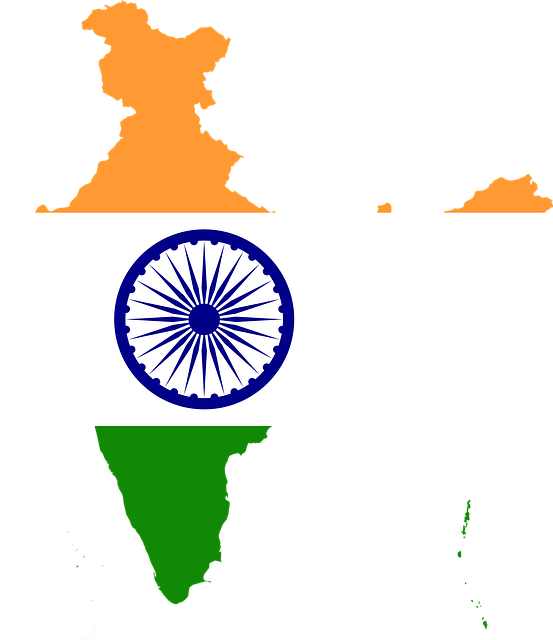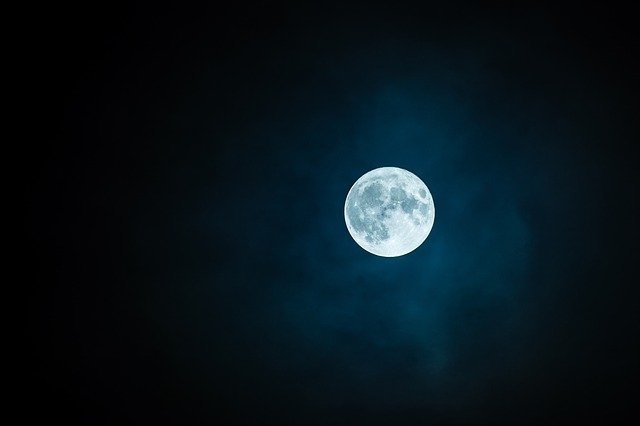*This post may contain affiliate links. This means we may make a commission if you purchase an item using one of our links*
India has a surface area of 3.28 million and a volume of 154.5 mllion cubic kilometers while the Moon is a spherical entity with a surface area of 37.9 million square kilometers and a volume of 21.92 billion cubic kilometers. It only makes sense that the Moon would be bigger as it is spherical whilst Indis is a mostly flat land mass in comparison.
For a more detailed look at what makes each entity as big as they are, continue reading to find out within this article below.
How Big Is India?

India is a South Asian country, which is the seventh largest by area and second most populated in the world (with over 1.3 billion people). In addition, it is the most populous democracy in the world. The Indian Ocean bounds it to the south, while the Arabian Sea covers the southwest, and the Bay of Bengal borders the southeast.
The diameter of India, measuring east to west, is 2,933km, while the extreme latitudes of north and south cover a length of 3,214km. This is actually larger than Pluto’s diameter. India’s coastline stretches over 7,000km, meaning that much of India’s landmass protrudes into the Indian ocean.
India’s total surface area is 3,287,590 sq. km and covers a diverse range of landscapes, from dry stretches of desert to snow-covered mountain peaks. Most of the central, northern, and eastern regions of India encompass the fertile lands of the Indo-Gangetic plain, while the sandy and rocky landscape of the Thar Desert occupy the west.
This fertile area – sometimes referred to as the Ganges plain – covers a large amount of India’s north and is created by soil deposits from the rivers that run from the vast Himalayan mountains. In some areas, the depth of this silt can be greater than 25,000ft!
The highest point is India is undefined because of a territorial dispute with Pakistan. The highest point within this territory (known as Kashmir) is K2, which stands at 8,611m. However, the highest point in India’s undisputed territory is Kanchenjunga which reaches a height of 8,598m.
Average crustal thickness varies between regions, ranging from 30-35 km in the plains to 80 km in the mountainous areas. Calculating the mean thickness among all these variations totals roughly 47km. If we then multiply this by the surface area, we can calculate the estimated volume of India to be 154,516,730 cubic km.
How Big Is The Moon?

The moon has a surface area of 37,936,695 sq. km, which is over 10 times the area of India. While this celestial body may appear to be a perfect sphere, it is an oblate spheroid which means that the diameter is slightly less when you measure it pole to pole instead of across the equator.
The moon’s volume, when we look at its entire body, is 21,971,669,064 cubic kilometers. The crust is thicker than the Earth’s crust, which is pretty significant if you’re comparing the size of these two bodies. The moon’s crust is between 60 and 100 kilometers thick.
Even if we take the moon’s crust at its thinnest, the total area tops two billion cubic kilometers, which is still significantly bigger than the volume of the India.
Viewing the moon, you can see the mix of dark lunar plains and bright mountainous highlands. Early observations led scientists to believe that the dark areas could represent water, but we have since discovered that there is no water on this airless surface.
Earth mountains are created through tectonic or volcanic action. In comparison, the moon’s mountainous ranges formed almost exclusively from the impact of crater collisions.
There are three significant mountain ranges on the moon: the Montes Caucasus and Montes Apenninus create a barrier between the Sea of Serenity and the Sea of Showers. And in the northwest, the Plato crater is encased by the Montes Alpes (lunar Alps).
Summary
All in all, considering India is only the 7th biggest country on Earth while the Moon the 5th biggest natural satellite within our solar system, it only makes sense that the gray rock orbiting us would be bigger as a whole.
It’s roughly 11 times larger in surface area and around 141 times Indian’s cubic volume. All of this makes sense considering India is a mostly flat land mass while the Moon is a spherical celestial object.

